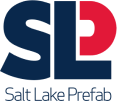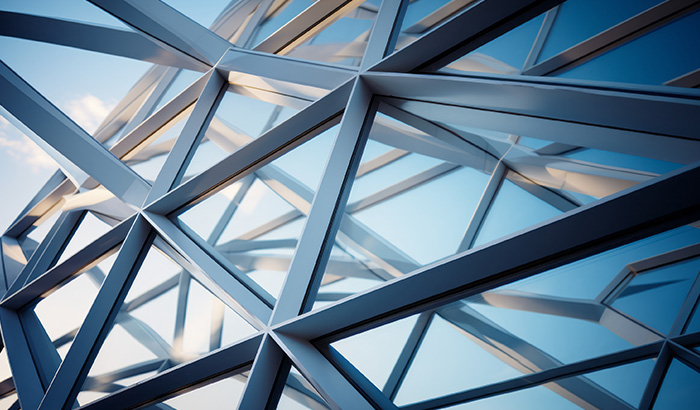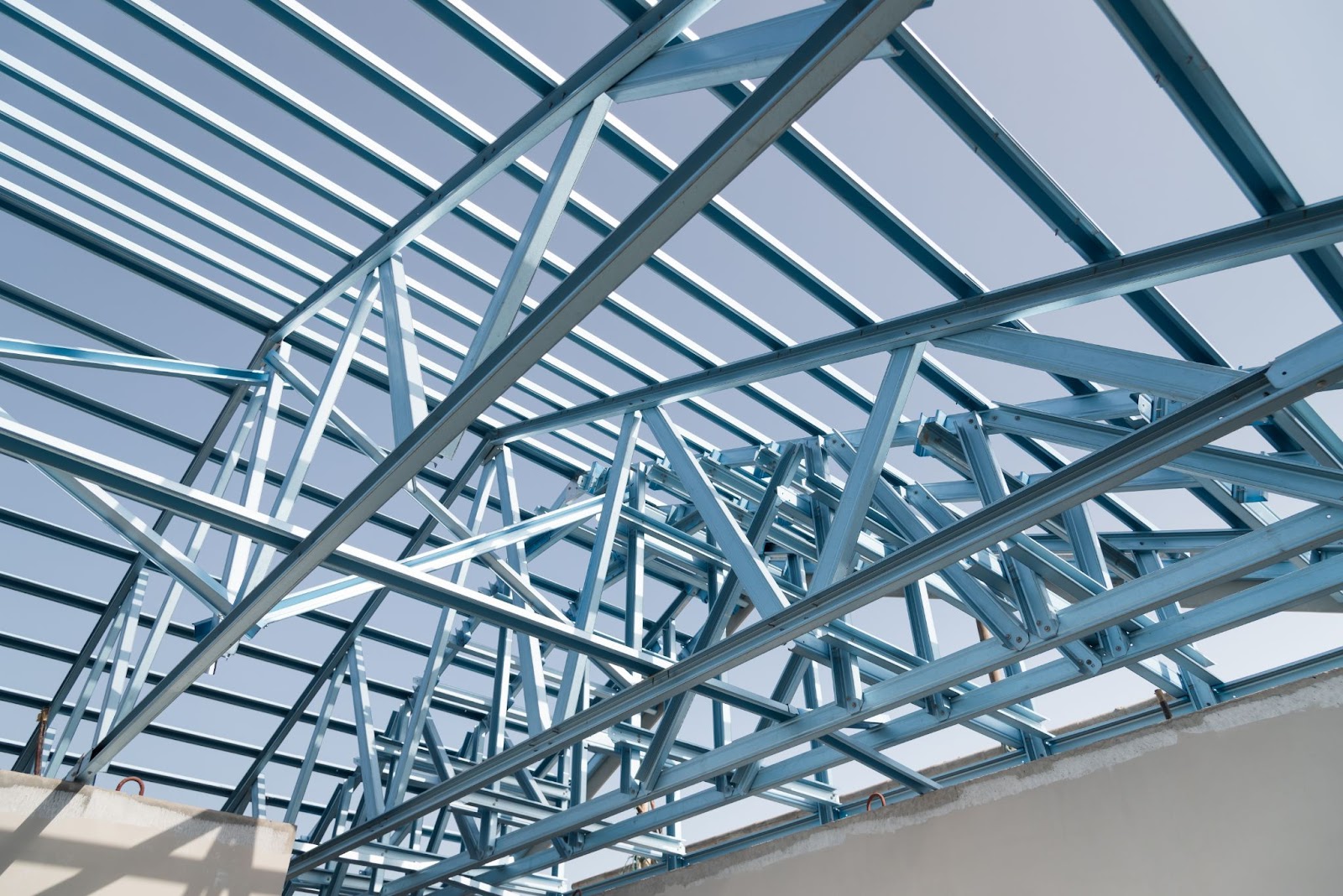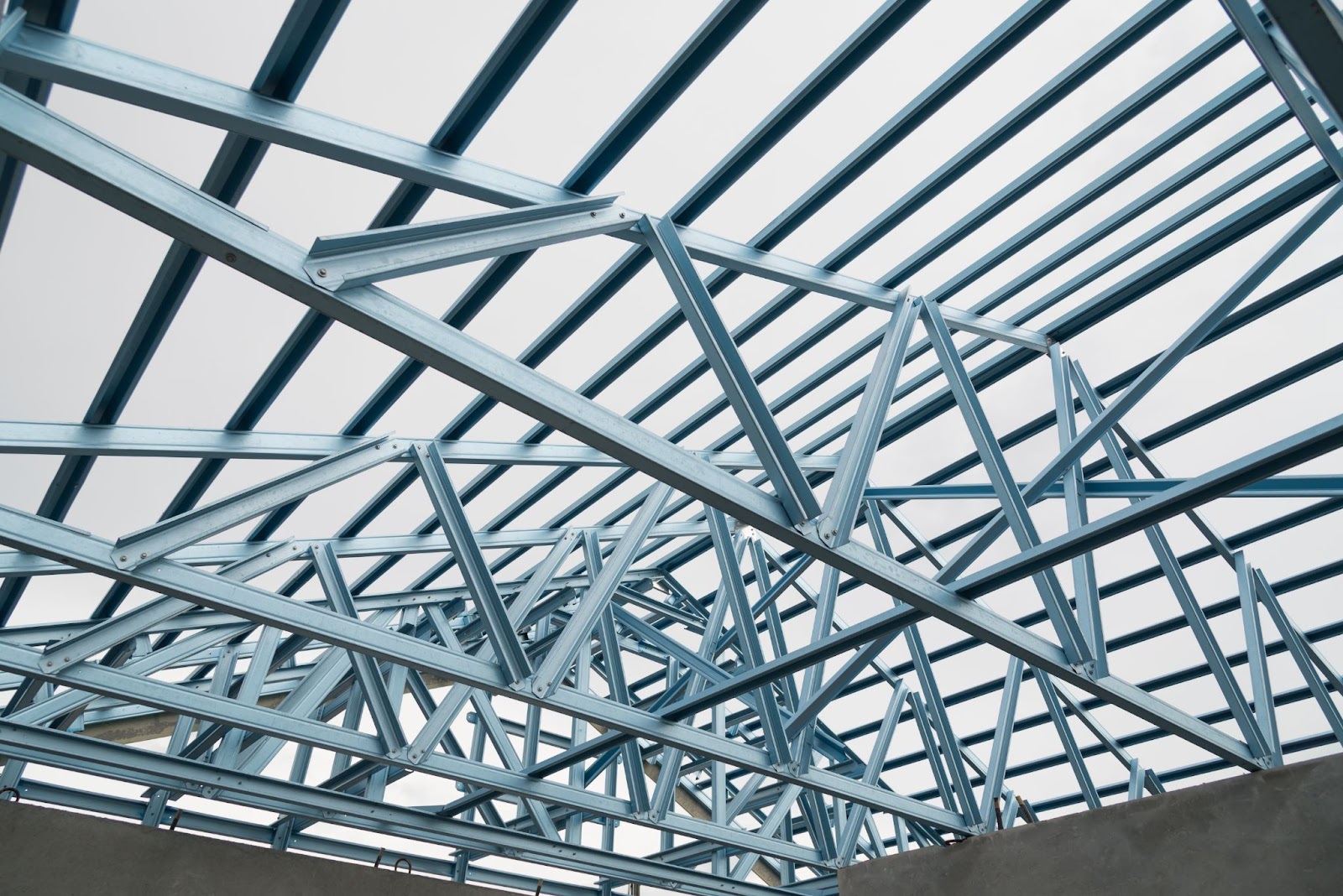Trusses play a fundamental role in providing the structural support that buildings need to stand tall and strong. They create frameworks that distribute the weight of the roof and upper floors, which translates to stability and safety for all types of structures.
Cold formed steel trusses, in particular, offer unmatched durability, flexibility in design, and cost-effectiveness, making them a preferred choice for developers and architects looking to push the boundaries of what’s possible in commercial spaces.
As we explore the advantages of prefabricated cold formed steel trusses, we’ll see how they’ve become a cornerstone of contemporary building techniques. Join us as we uncover the reasons behind the growing popularity of cold formed steel trusses and how they’re shaping the future of commercial construction.
Advantage 1: durability and longevity
Cold formed steel trusses boast both durability and longevity, making them indispensable to builders and architects. Their unbeatable strength comes from steel — a material capable of shouldering heavy loads and withstanding intense pressures. This resilience ensures commercial buildings remain safe and stable far longer than those supported by other materials.
What truly sets cold formed steel trusses apart is their ability to defy environmental challenges. Unlike wood, steel is immune to moisture, termites, and mold, and it stands up to fire, safeguarding the building’s structural integrity and offering peace of mind. This resistance prolongs a building’s lifespan and slashes the need for costly repairs and replacements. This is another reason why using cold formed steel trusses means significant long-term savings.
Prefabricated cold formed steel trusses are champions of sustainability. Their enduring nature means less need for resource-intensive maintenance or rebuilds, so they are also a green choice for the forward-thinking construction industry.
Advantage 2: design flexibility
Diving into the second major advantage of cold formed steel trusses, we uncover their unparalleled design flexibility. Cold formed steel trusses offer the creative freedom to push beyond traditional architectural boundaries to enable the construction of complex and innovative commercial structures.
The inherent strength of steel allows trusses to span large distances without the need for intermediate columns or supports. This opens up vast, unobstructed spaces within buildings and provides architects the canvas to design grandiose interiors.
Whether it’s a sprawling shopping mall that invites boundless exploration or an open-concept office space that fosters collaboration and creativity, cold formed steel trusses make these designs possible.
Cold formed steel trusses adapt effortlessly to various architectural styles and shapes, from sleek, modern aesthetics to intricate, geometric designs. This adaptability empowers architects to dream big, knowing their most ambitious designs can become realities.
The Sydney Opera House, with its complex, shell-like roofs and the intricate geometric patterns of the Louvre Abu Dhabi’s dome, serve as testaments to the creative possibilities enabled by the flexibility of steel in construction.
In the realm of commercial structures, cold formed steel trusses have paved the way for innovations such as cantilevered sections that seem to defy gravity, creating eye-catching features that draw visitors and enhance the building’s brand identity. Airports, with their vast, open terminals and sweeping roofs, are perfect examples of cold formed steel trusses at work. They combine functionality with awe-inspiring design.
This design flexibility also extends to future modifications. As commercial spaces evolve, cold formed steel trusses easily accommodate changes or expansions so that buildings can adapt to new needs or technologies without extensive overhauls. This saves on future construction costs and contributes to the structure’s sustainability. Because of cold formed steel trusses, a building will continue to serve its community for generations.
Advantage 3: cost-effectiveness
While it’s true that the initial investment in cold formed steel trusses might seem higher than traditional materials, the long-term savings they offer paint a very different financial picture. Ultimately, cold formed steel trusses become a wise economic choice over time, considering both maintenance and replacement costs and the balance between initial outlay and long-term benefits.
From the outset, cold formed steel trusses are a testament to durability and minimal maintenance. Unlike wood or other materials that may succumb to pests, moisture, or even fire ravages, steel remains steadfast.
This resilience translates into significantly reduced maintenance costs over the lifespan of a building. The absence of a need for treatments against rot or pests, or for fireproofing, means that the ongoing costs typically associated with building upkeep are markedly lower.
The longevity of cold formed steel trusses extends the life cycle of commercial buildings. This durability means that the need for major repairs or replacements is drastically reduced, if not entirely eliminated. Consider the implications of not replacing roof supports or undertaking major structural repairs for decades. When projected over the years, the savings are substantial, effectively offsetting the initial higher cost of cold formed steel trusses.
The economic argument for cold formed steel trusses becomes compelling when we weigh the initial investment against these long-term benefits. The upfront cost is an investment in a building’s future. By choosing cold formed steel trusses, developers and builders are essentially locking in lower future costs for maintenance and replacement to ensure a more predictable and manageable budget over the building’s lifetime.
Considering the balance between the initial investment and the long-term savings, cold formed steel trusses not only make sense from a structural standpoint but also from a fiscal perspective. They will prove to be a prudent investment in the longevity and sustainability of a building.
Advantage 4: speed of construction
Cold formed steel trusses significantly accelerate the construction timeline, which is a crucial factor in commercial building projects. The speed of construction impacts the overall project schedule but also brings a host of benefits that make a substantial difference in the commercial construction landscape.
Prefabricated cold formed steel trusses arrive on the construction site ready to be installed. This readiness eliminates the time-consuming measuring, cutting, and fitting process that traditional construction methods often require.
Imagine the efficiency gained when large sections of a building’s framework are easily able to be lifted into place and secured in a fraction of the time it would take to construct the same framework piece by piece on-site. This streamlined process significantly reduces the construction timeline, which allows projects to move forward at an impressive pace.
Earlier revenue generation
The benefits of faster construction are particularly impactful in the commercial sector. Every day saved in the construction schedule translates to an earlier start for commercial operations, which means businesses open their doors to customers sooner. This earlier operational start leads to significant financial advantages, including earlier revenue generation and a competitive edge in the market.
Cost savings
A quicker construction timeline also leads to cost savings. Reduced labor costs are a direct benefit, as the amount of time construction crews are needed on-site decreases. The faster a project reaches completion, the sooner any financing costs associated with construction loans or investments begin to pay off and reduce the financial burden on investors or owners.
The ability to complete projects more quickly without sacrificing quality or safety enhances a construction firm’s reputation. This leads to more business opportunities and partnerships, as clients are always looking for efficient and reliable construction partners who deliver projects on time or even ahead of schedule.
Advantage 5: environmental benefits
Highlighting the environmental benefits of cold formed steel trusses is key. Steel’s remarkable recyclability stands out, allowing trusses to be made from recycled materials and later repurposed, significantly cutting down the need for new resources and reducing the environmental toll of mining and processing.
This recyclability ensures materials provide maximum value with minimal waste. Cold formed steel trusses are also engineered and manufactured with precision, which leads to minimal waste during production. This contrasts sharply with traditional methods that generate significant off-cuts and discarded materials. Such efficiency reduces waste and lessens the carbon footprint from material transport and disposal.
The durability of cold formed steel trusses means buildings need less maintenance and resources for repairs, contributing to a lower environmental impact over their lifespan. They also enhance energy efficiency in buildings, supporting sustainable features like natural shading and renewable energy systems, reinforcing cold formed steel trusses’ role in fostering sustainable construction practices.
Advantage 6: strength-to-weight ratio
As we venture further into the advantages of cold formed steel trusses in commercial construction, let’s spotlight their exceptional strength-to-weight ratio. This is a quality that significantly enhances structural efficiency.
The high strength-to-weight ratio means that cold formed steel trusses offer superior strength without adding unnecessary bulk. This quality is crucial for constructing large commercial spaces, as it allows for longer spans without the need for intermediate columns or supports.
Think of expansive shopping malls, airy exhibition halls, or vast office spaces, all made possible by cold formed steel trusses’ slender yet powerful framework. This ability to cover large areas with minimal structural interference enhances the aesthetic appeal of a space and improves its usability and versatility.
From an engineering perspective, the strength-to-weight ratio of cold formed steel trusses translates into less material needed to achieve the desired structural integrity. This efficiency reduces the overall load on the building’s foundation and supporting structures, leading to cost savings in materials and construction.
Choosing the right cold formed steel trusses for your project
Selecting the right cold formed steel trusses becomes a pivotal decision that shapes the success of your project. This choice requires making an informed decision that aligns with your project’s goals, aesthetic, and structural requirements.
Let’s walk through some tips on how to select the right type and design of cold formed steel trusses and underscore the importance of partnering with experienced manufacturers and engineers.
Understanding your project’s needs
Every commercial project has unique demands. Whether you’re designing a spacious retail center, a multi-story office building, or an industrial warehouse, the first step is to clearly define the structural and architectural requirements of your project. Consider factors such as the span of spaces, load-bearing needs, and the desired aesthetic.
Understanding these aspects will guide you in choosing trusses that not only support the building physically but also complement its design.
Exploring types and designs
Steel trusses come in various configurations, each with its strengths. From Pratt to Warren to North Light trusses, the options are vast. Dive into the specifics of each type to understand which aligns best with your project’s specifications.
For instance, long-span trusses are ideal for facilities requiring large open spaces, while pitched trusses might better suit structures where aesthetic appeal is a priority.
Consulting with experts
The complexity of choosing the right trusses calls for collaboration with seasoned professionals. Working with experienced manufacturers and engineers is crucial. These experts bring a wealth of knowledge, not simply about the trusses themselves, but also about how they integrate with other building systems and meet regulatory standards.
They provide valuable insights into the most suitable types and designs for your project, ensuring that the trusses meet both your current needs and future considerations.
Selecting the right cold formed steel trusses for your commercial construction project is a nuanced process that benefits greatly from expert input and careful consideration of your project’s unique demands. By prioritizing collaboration with experienced manufacturers and engineers, you ensure that your building stands tall and meets the highest standards of strength, beauty, and sustainability.
Superior cold formed steel trusses from Salt Lake Prefab
Choosing the right supplier of cold formed steel trusses is pivotal. Salt Lake Prefab is a leader in providing high-quality, environmentally friendly cold formed steel trusses. Our commitment to precision engineering, sustainability, and innovative design solutions aligns perfectly with the green building practices essential in today’s construction landscape.
By partnering with Salt Lake Prefab, you’re not merely investing in superior structural support for your projects; you’re also embracing a future of sustainable construction. For those looking to incorporate cold formed steel trusses into their next commercial project, Salt Lake Prefab offers the expertise, quality, and environmental consciousness needed to bring your vision to life.
Contact Salt Lake Prefab today to learn more about how we are able to provide quality solutions for your next project.



